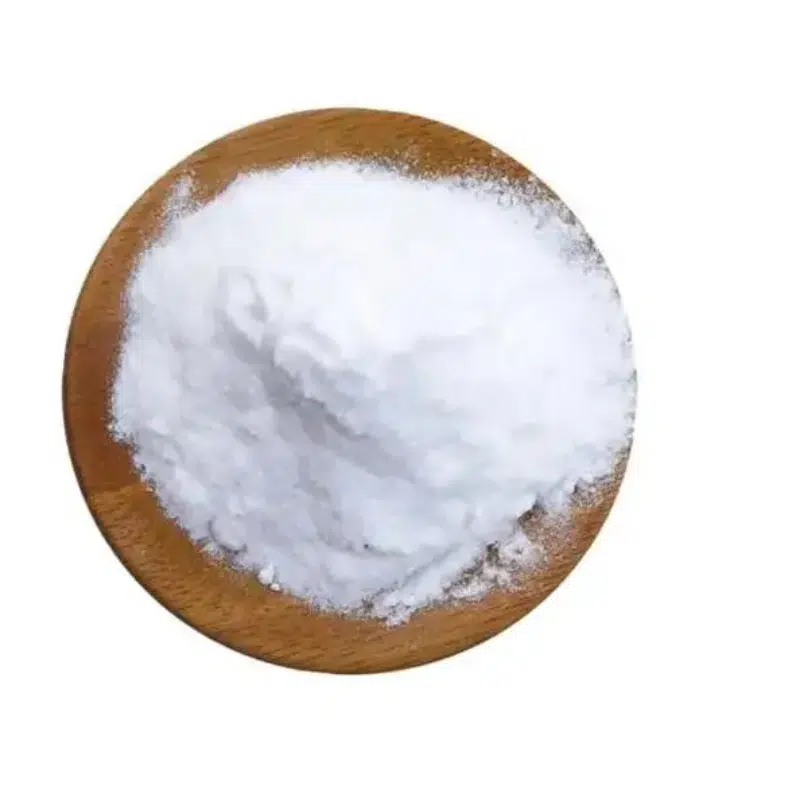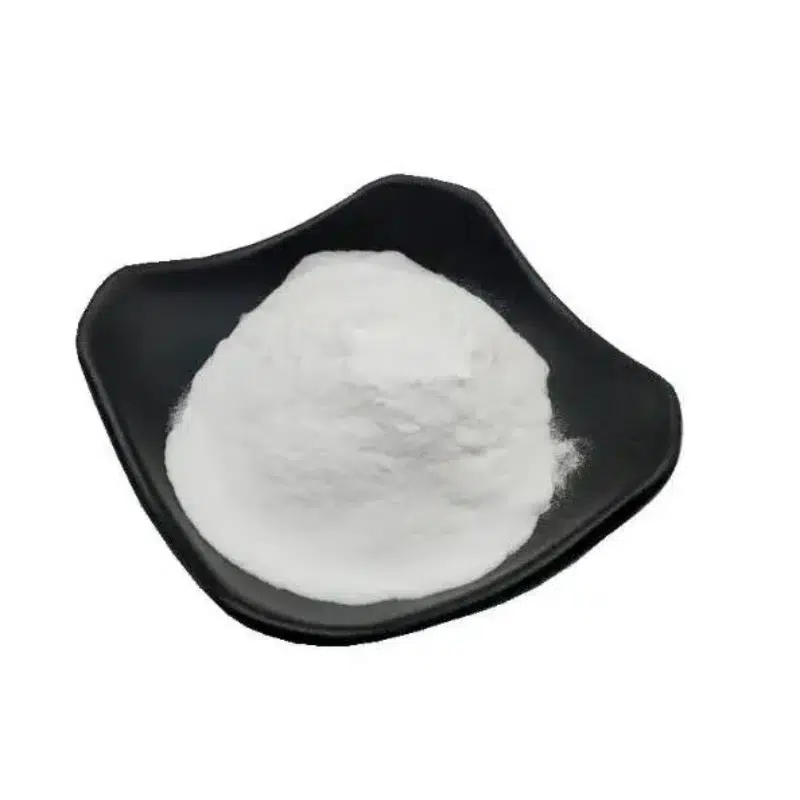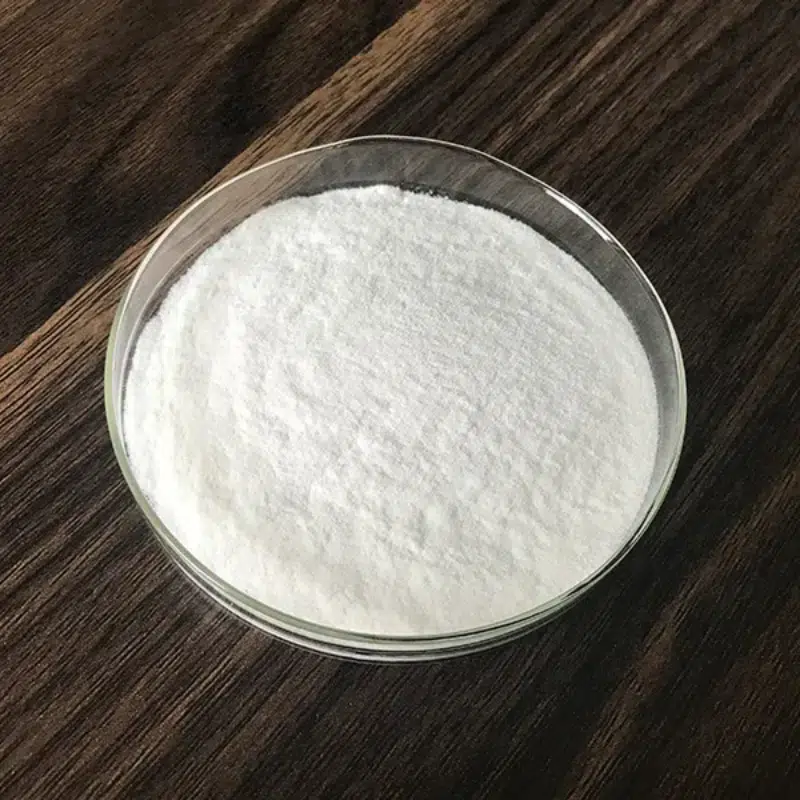




Wholesale Carboxymethyl Cellulose Powder
Features
Carboxymethyl cellulose is a white powdery polymer compound based on natural cellulose and finely chemically modified. Carboxymethyl cellulose is odorless, tasteless, non-toxic, and appears as a white or slightly yellow powder. It is not only soluble in water and can quickly form high viscosity and stable colloidal solutions, but also has excellent thickening, suspension stability, film formation, and water retention properties. Carboxymethyl cellulose plays an indispensable role in various fields such as food, medicine, daily chemical, textile, and papermaking, helping to improve product quality, enhance stability, and strengthen functionality.
Market Prospects
With the increasing demand of consumers for food quality and taste, carboxymethyl cellulose is becoming more and more widely used as a thickener, stabilizer, and emulsifier in the food industry, especially in the fields of healthy food and special diets, where the demand for high-quality carboxymethyl cellulose continues to grow. Carboxymethyl cellulose, as a drug excipient in pharmaceutical preparations, has cellulose functions such as thickening, emulsification, and stability, and its application is gradually expanding. With the growth of the global pharmaceutical market and the continuous advancement of pharmaceutical formulation technology, the market demand for carboxymethyl cellulose in the pharmaceutical industry will also maintain stable growth. Carboxymethyl cellulose also plays an important role as a thickener, dispersant, and flow aid in fields such as oil extraction, textile printing and dyeing, and papermaking. The sustained development of these industries will provide new growth points for the carboxymethyl cellulose market.
Hydroxypropyl Methyl Cellulose Manufacturing Process
As a professional cellulose factory,we select high-quality and pure natural cellulose as raw materials, such as wood, cotton, sugarcane bagasse, etc. Crush, screen, rinse, and dry the raw materials to ensure that the fineness, purity, and dryness of cellulose meet production requirements. Mix the pre treated cellulose with sodium hydroxide solution and perform alkalization reaction under certain temperature and time conditions to generate alkaline cellulose. Mix alkaline cellulose with sodium chloroacetate solution and carry out etherification reaction under moderate temperature and time conditions to generate sodium carboxymethyl cellulose. Wash the product after etherification reaction multiple times with water to remove impurities such as unreacted sodium chloroacetate and sodium hydroxide. Perform acid-base neutralization treatment on the washed product and adjust the pH value of the product to the neutral range. Dry the neutralized carboxymethyl cellulose product to remove moisture and obtain a dried carboxymethyl cellulose solid. Grind the dried carboxymethyl cellulose solid to obtain a uniform carboxymethyl cellulose powder. Sieve the crushed carboxymethyl cellulose powder to remove particles that do not meet the particle size requirements, ensuring the uniformity of the product’s particle size. Package the screened carboxymethyl cellulose powder according to customer requirements in different specifications and forms.
Use Precautions
Carboxymethyl cellulose has good water solubility, but it needs to be thoroughly stirred during the dissolution process to avoid clumping and ensure uniform dispersion. Secondly, the viscosity of carboxymethyl cellulose is influenced by various factors such as temperature, pH value, and concentration. It is recommended to conduct a small-scale test before use to determine the optimal conditions for use. In terms of storage, please keep it dry, avoid light, and avoid direct contact with strong oxidants to ensure product stability.
●FREE SAMPLE
*Customization is always available, please mark down your need in cart or just contact us.
Project Monitoring
Shipping Order Track
Instructions for Use
VIP Customer Service
Intact Guarantee
Characteristics
- Significant Thickening Effect: Carboxymethyl cellulose molecular chains form a network structure through hydrogen bonding interactions, which can effectively increase viscosity in solution. This high viscosity characteristic makes carboxymethyl cellulose an indispensable thickener in many industrial fields.
- Strong Suspension Stability: Carboxymethyl cellulose molecules have negatively charged carboxyl groups on their chains, which can form hydrogen bonds with water molecules to form a hydration layer, thereby increasing the viscosity of the solution and keeping solid particles suspended in the solution. In addition, carboxymethyl cellulose can prevent particle aggregation through charge effect and physical layer effect, further enhancing suspension stability.
- Excellent Film-forming Performance: Carboxymethyl cellulose can form a uniform and dense thin film on solid surfaces. This film has a certain strength and flexibility, which can provide effective protection for the substrate. Meanwhile, the film-forming performance of carboxymethyl cellulose is also influenced by factors such as its molecular weight, solution concentration, pH value, and the addition of additives. By optimizing these conditions, the film-forming quality can be further improved.
- Outstanding Water Retention Performance: Hydrophilic groups such as hydroxyl and carboxyl groups on the molecular chain of carboxymethyl cellulose can form hydrogen bonds with water molecules, effectively adsorbing and retaining water. This water retention property makes carboxymethyl cellulose perform well in applications that need to maintain humidity, such as skin care products, facial mask and other products.
- Good Chemical Stability: Carboxymethyl cellulose has a certain degree of stability under acidic and alkaline conditions, and can maintain its properties unchanged over a wide pH range. In addition, carboxymethyl cellulose also has certain thermal and oxidative stability, which can resist thermal and oxidative degradation under certain conditions. These chemical stability characteristics enable carboxymethyl cellulose to exhibit stable performance in various industrial environments.
- Environmentally Friendly And Biodegradable: Carboxymethyl cellulose is a natural polymer compound with good biodegradability. In nature, carboxymethyl cellulose can be decomposed by microorganisms and ultimately converted into harmless substances. This environmental characteristic makes carboxymethyl cellulose an ideal choice to replace traditional chemical additives, meeting the requirements of modern industrial green environmental protection.
Main Function
- Food Industry
- Carboxymethyl cellulose is an indispensable additive in the food industry. As a thickener, it can significantly enhance the viscosity and stability of foods such as fruit juice, dairy products, and ice cream, ensuring a delicate taste and uniform texture of the product. Meanwhile, carboxymethyl cellulose can also serve as a suspension agent to prevent solid particles from settling in jams and seasonings, maintaining the beauty and quality of the product. In addition, in baked goods, the water retention performance of carboxymethyl cellulose can extend the shelf life of products such as bread and cakes, making them softer and more delicious.
- Pharmaceutical Industry
- In the pharmaceutical industry, carboxymethyl cellulose is widely used in the production of pharmaceutical preparations. As an excipient for drugs, it can help tablets form and maintain shape stability, while controlling the release rate of drugs and improving their bioavailability. In addition, carboxymethyl cellulose has good biocompatibility and non toxicity, and is often used as a matrix material for medical products such as cellulose sodium eye drops and ointments, providing lubrication and protection for the eyes and skin. In the research of anticancer drugs, specific types of carboxymethyl cellulose are also used as drug carriers to achieve stable drug release and targeted delivery.
- Daily Chemical Industry
- In the daily chemical industry, carboxymethyl cellulose is an important component in products such as detergents and cosmetics. In detergents, carboxymethyl cellulose serves as an anti sedimentation agent, which can effectively prevent stains from re depositing onto fabrics during the washing process and improve the washing effect. In cosmetics, carboxymethyl cellulose, as a thickener and stabilizer, can improve the texture and stability of products, making face cream, lotion, etc. more delicate and smooth. Meanwhile, the moisturizing properties of carboxymethyl cellulose can also help the skin retain moisture and enhance the skincare effectiveness of cosmetics.
- Textile And Paper Industry
- Carboxymethyl cellulose plays an important role in the textile and paper industries. In the textile industry, carboxymethyl cellulose is used as a sizing agent to improve the strength and wear resistance of yarns, and reduce the breakage rate during weaving. At the same time, it can also serve as a printing and dyeing additive, helping the dye to be evenly distributed and fixed on the fibers, improving the printing and dyeing effect. In the paper industry, carboxymethyl cellulose serves as a sizing and reinforcing agent, which can improve the strength and water resistance of paper, enhance its quality and service life.
- Petroleum Industry
- In the petroleum industry, carboxymethyl cellulose is an important additive for drilling fluids and oil fracturing fluids. As a thickener and stabilizer of drilling fluid, it can improve the viscosity and stability of drilling fluid, prevent wellbore collapse and mud loss, and ensure the safety and smooth progress of drilling operations. During the oil recovery process, carboxymethyl cellulose, as one of the components of fracturing fluid, can increase the viscosity and carrying capacity of the fracturing fluid, helping to effectively inject the fracturing fluid into the formation and improve oil recovery efficiency.
- Ceramic Industry
- In the ceramic industry, carboxymethyl cellulose is used as an adhesive and plasticizer for raw materials, which can significantly improve the formability and strength of ceramic products. It can help ceramic raw materials maintain stable shape and size during the molding process, reducing the occurrence of defects such as deformation and cracking. Meanwhile, carboxymethyl cellulose can also improve the sintering performance and mechanical strength of ceramic products, making them more sturdy and durable.
Appearance | White Or Light Yellow Powder |
Viscosity (1% solution, dry basis, 25℃) | 1500- 2000 mPa.s |
Particle Size | Min 95% pass 80 mesh |
Purity | 99% |
Moisture Content | ≤10% |
PH (1% Solution ) | 6.0-8.5 |
Loss On Drying | ≤8.0% |
Degree Of Substitution | 0.6- 0.9 |
Sodium | ≤12.4% |
Sodium Chloride | ≤0.5% |
Sodium Glycolate | ≤0.4% |
Filtrate Volume(ml) | ≤10 |
Classification | Chemical Auxiliary Agent |
Grade | Industrail Grade |
Storage | Dry Cool Place |
